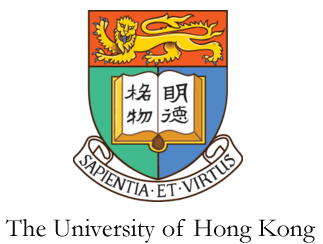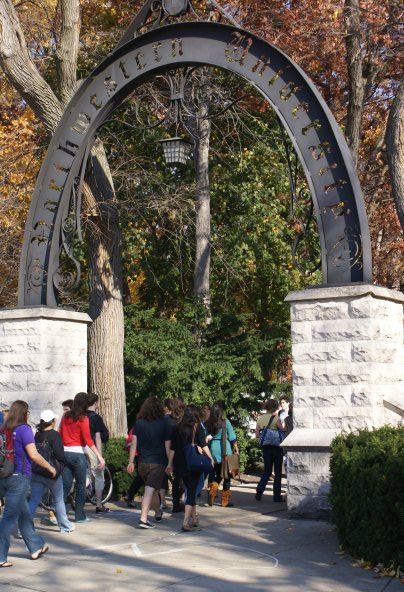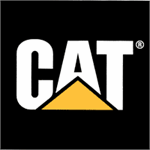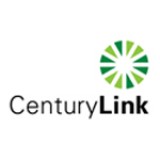Inside MIT and MIT opencourseware
MIT’s OpenCourseWare Seeks To Help The Public Learn From The Institution’s Best
The Massachusetts Institute of Technology (MIT) is a private research university located in Cambridge, Massachusetts in the United States. It has five schools and one college, which has 32 academic departments that are based on technological and scientific education/research. The MIT was founded in 1861 during the height of the industrialization in the country. It has an early emphasis on the importance of applied technology and research at the undergraduate and graduate levels. Because of this, MIT has established a close relationship with the industry.
The term of MIT President Karl Taylor Compton and Vice President Vannever Bush saw the school reformatting its curriculum to give more emphasis on the significance of pure sciences like physics and chemistry. The institution then grew as a relevant factor in the Industrial Age, wherein focus on science and engineering was greatly highlighted. Because of this, the institution cemented its reputation as a premier university for scientific research and education. But unlike Ivy League schools, MIT is mainly for middle-class families, and depended more on tuition than on endowments or grants.
During World War II and the Cold War, MIT was highly involved in developing computers, radars and inertial guidance for defense research since Bush was appointed as the head of the federal Office of Scientific Research and Development. Engineers and scientists from all around the country met at the MIT and developed the microwave radar for the British military. Aside from this, the institution was also greatly responsible for defense projects such as gyroscope-based control systems for gunsight, bombsight and inertial navigation.
After the war, the school still continued with the tradition of helping boost the country’s defense research. From technological and scientific research/education, MIT has further expanded into he disciplines of biology, economics, linguistics, political science and management. Other post-war projects included the SAGE, guidance systems for ballistic missiles and the Project Apollo.
The school takes pride in its award-winning faculty and staff, which includes Nobel laureates, National Medal of Science recipients, Rhodes Scholars and MacArthur fellows.
Today, MIT still continued to be a relevant force in the industry. It has grown well with technology and was able to adapt to changing times. Its students and professors were some of the geniuses behind the Project MAC, the Artificial Intelligence Laboratory and the Tech Model Railroad Club. It is also responsible for the establishment of technology-related organizations and groups such as the GNU Project, Free Software Foundation, the MIT Media Lab, the World Wide Web Consortium, the One Laptop Per Child project and the MIT opencoursesware.
The institution has a total of six schools—architecture and planning, engineering, humanities, arts and social sciences, management, science and health sciences and technology. It is offering more than 30 departments and programs such as aeronautics and astronautics, anthropology, biological engineering, chemical engineering, business, comparative media studies, computational and systems biology, economics, foreign languages and literatures, history, mathematics, earth, atmospheric and planetary sciences, women’s and gender issues, materials science and engineering, political science and mechanical engineering.
MIT’s OpenCourseWare
The MIT OpenCourseWare Project is an initiative of the students and faculty members of the institution. It aims to put all of their educational materials from its undergraduate and graduate levels on the Internet, so that other students and the public can access them. The free online courses are a large-scale and web-based application that was first announced in October 2002. It was originally funded by the William and Flora Hewlett Foundation, the Andrew W. Mellon Foundation and the MIT. Today though, the MIT opencoursesware is fully supported by the institution.
There are over 2000 free online courses being offered by the program. It is available to the public free of charge. Most of the content that can be found in such courses are derived from the actual classes conducted at MIT. Some of the materials there are homeworks and projects of the students themselves. There are also lecture notes, assignments, reading study guides and lecture recordings on almost all of the current programs being offered by the institution.
The MIT opencoursesware is open to all individuals who want to learn from the exchanges happening between students and faculty members at MIT. However, an individual would not be able to interact with the professor nor would they be able to earn credits from studying the course. You can learn from almost all of the subjects that are being taught—from the fundamentals of engineering to science writing, the new media and digital poetry.
Since MIT is known for its top engineering and mathematics courses, you may want to check it out if you are quite skillful in numbers and science. These courses are also the most popular programs in the institution and in the MIT opencoursesware. Younger people may also be quite interested with the MIT’s high school section, which can better equip and prepare them for higher learning.
According to the official website of the MIT OpenCourseWare, their most popular topics are the introduction to computer science and programming, single variable calculus, classical mechanics, linear algebra, principles of microeconomics, circuits and electronics, electricity and magnetism, introduction to algorithms, multivariable calculus, differential equations, principles of chemical science and structure and interpretation of computer programs.
How to use the MIT OpenCourseWare
There are a lot of people who want to learn through the MIT opencoursesware. Who can blame them if you can learn from the best for free? The MIT free online courses website is easy enough to navigate. It has a user-friendly interface that makes it easy for prospective students to understand how to jump from one point to the next. If you are just starting on the program, you may want to check the classes being offered by the MIT project. Doing so would enable you to have a firm grasp of the kinds of programs being offered by the school.
After choosing the program that caught your interest, you would have to click on that link. A list of the available materials will then appear on your screen. You would have to start perusing and reviewing the syllabus first, so that you will know if you can meet the necessary requirements of the class. The syllabus also has a list of suggested readings and textbooks. Try to search your local library or the Internet if there are available books, journals and other needed materials there. You can also check the MIT opencoursesware readings, assignments and exam categories since you can find more detailed information there about the requirements that you need to meet. Before starting the class, you should skim through the reading materials and start getting a grasp of what the subject is about.
The next step would be, of course, to follow the topics of the course as they happened in class. You should also try meeting the requirements such as quizzes, seatworks, assignments and projects. However, you are not actually required to follow how the class was conducted. You can jump ahead to topics that might be more interesting to you than others. But if you want to really understand the topics assigned by the instructor, it would be best to follow the syllabus since it will help you maximize your learning.
It is best to understand though that you are not going to get any credits with the free online courses since you will have to enroll in the school as a traditional student for you to be able to earn academic credits. The general purpose of the MIT opencoursesware is just to offer their materials to the public for free. The project has even paved the way for other institutions to follow their lead in offering the materials completed by their students and professors to the public. This is part of an advocacy that aims to let those without the resources to enroll in a traditional school acquire knowledge from some of the best institutions in the country.
What’s new with MIT OpenCourseWare
This year, the MIT has celebrated the establishment of its MIT opencoursesware program that aims to provide the public with the materials prepared by students and professors. It was on September 30, 2002 that the program first published the set of materials for an MIT course. In commemoration of its 10th year anniversary, the MIT has decided to publish freely the core of its whole curriculum. It has also built a new headquarters for the program’s wide range of activities.
It also gave commendations to the students and professors who made the program possible. As much as it is easy to deliver information nowadays, the accuracy of the content is still a feat for MIT students and professors. To be able to publish the more than 2000 materials available on the MIT opencoursesware website, more than 1400 MIT students and faculty would have to join the cause to bring these materials to the public for free.
“Every one of them was a willing participant, guided by a bold idea that still defies all market logic: to advance learning worldwide by offering knowledge for free. OCW would not exist without their individual contributions, which collectively represent a truly remarkable act of pure intellectual philanthropy,” a news report on the MIT OpenCourseWare website said.
“The individual gifts of hundreds of MIT faculty, and the hard work of MIT staff, have resulted in a website that truly unlocks knowledge and inspires minds, and will continue to touch the lives of millions for many years to come,” the report said.
The various video and audio courses will surely give distance-learning students a more comprehensive understanding of what the MIT opencoursesware program is all about. Such is the aim of the institution to help the public learn more about the programs they are offering that they even established the new ChemLab Boot Camp Series. In September this year, the MIT published its first episode of the ChemLab Boot Series. The new program is a series of videos that follows the experiences of 14 MIT freshmen students as they start working in the MIT chemistry laboratories.
Each year, groups of freshmen students are introduced to the MIT’s infamous chemistry laboratories. Passing all the requirements of the class, called the 5.301 Chemistry Laboratory Techniques, will enable the students to earn a spot in the prestigious MIT research laboratory. Those who will successfully complete the course will automatically be earning a job at the institute’s research laboratory.
The reality television-like series runs for two to five minutes. Additional episodes will be added to the list each week. Those who want to receive notifications about new video releases must sign up for the ChemLab Boot Camp e-mail list.
The future of MIT OpenCourseWare project
There is simply no stopping the institution in terms of offering the public with complete course materials. The institution also said that it has no plans of charging the public with the materials they are publishing because they continue to aim to inspire the public to learn more about their works. High school students and out-of-school youth have continued to subscribe to the MIT opencoursesware project since they can learn from one of the best institutions for free.
In fact, the MIT report even published a letter from a high school student who follows the MIT course. It said that, “It almost sounds ridiculous, but here I am, miles away, academically and emotionally bonded to these professors, and awe-struck, laughing, inspired alongside students on the other side of the screen.”
These free online courses from the institution has inspired other foundations to sponsor such projects from other universities. MIT has not only established itself as a premier institution of scientific and research learning, it has also made a reputation for itself by offering these free courses to the public. Since not many people have the resources to enroll in a traditional school, the MIT opencoursesware gives the public the chance to learn from one of the best institutions in the United States for free.










